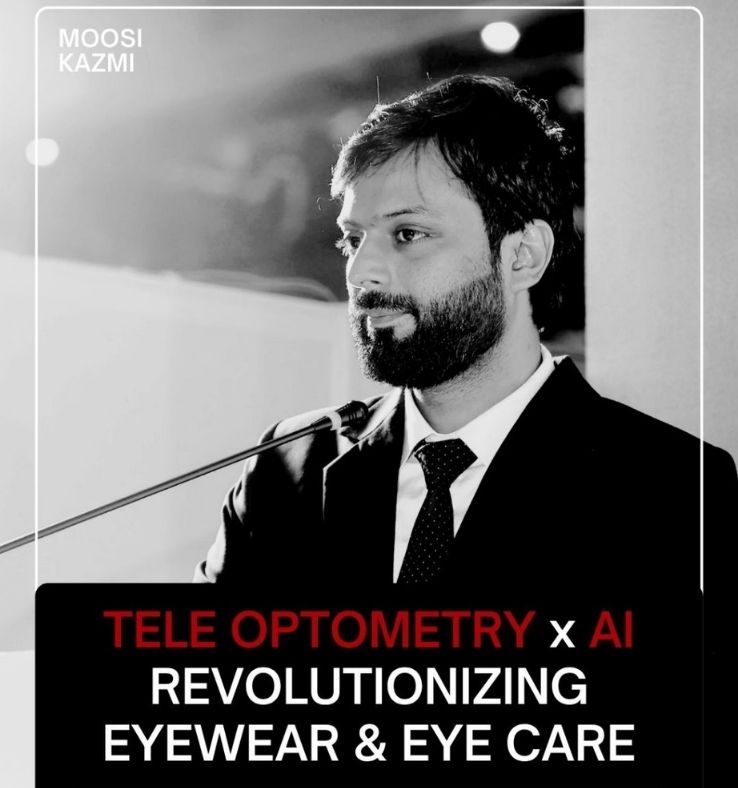Unlocking Last-Mile in Eyecare: The Power of Telehealth
000.jpg)
In India, the landscape of eye care has been evolving rapidly over the past few decades, yet there remains a significant gap in the accessibility and affordability of quality eye care services. While urban centers boast advanced facilities and trained ophthalmologists, millions of Indians in far-flung regions still struggle to access even basic eye care. The 'last mile' problem refers to the difficulty in delivering essential services to remote or underserved areas, often due to infrastructure limitations, distance, and lack of specialized healthcare professionals.However, there's a ray of hope on the horizon – the convergence of technology and healthcare in the form of telehealth in eye care. In this article, we explore how opticians can play a pivotal role in removing barriers to last-mile eyecare delivery while unlocking untapped markets.
Tele Eye Health: Bridging the Eyecare Gap:
Telemedicine, including tele eye health, has emerged as a promising solution to address these disparities. By leveraging digital technologies such as video consultations, telemedicine platforms allow eye care practitioners to remotely diagnose, monitor, and treat a range of eye conditions. This approach not only enhances access to eyecare services but also mitigates geographical barriers.
The Role of Opticians in Telehealth:
Opticians are key stakeholders in the field of eyecare and are uniquely positioned to contribute to tele eye health initiatives. Here's how they can actively participate:
Community Outreach: Opticians can serve as the link between tele eye health platforms and the communities they serve. By organizing awareness campaigns and health camps, opticians can educate the public about the benefits of telemedicine and how to access these services.
Prescription and Refraction Services: Opticians can offer remote prescription and refraction services through tele eye health platforms. Patients can have their vision checked locally, and the data can be transmitted to an ophthalmologist for assessment and prescription.
Dispensing Eyeglasses: Opticians can provide guidance on selecting and fitting eyeglasses based on prescriptions generated through teleconsultations. They can also offer advice on lens choices and coatings to suit individual needs.
Patient Education: Opticians are well-placed to provide patients with information on eye health, preventive measures, and the proper use and care of eyeglasses or contact lenses. Follow-Up Care: After a teleconsultation or eyeglass dispensing, opticians can facilitate follow-up care and monitor patients' progress, ensuring that they adhere to treatment plans and prescriptions.
Partnering with Mobile Clinics: Collaborating with mobile eyecare clinics equipped with telemedicine capabilities can extend the reach of opticians. These clinics can travel to remote areas, connect with opticians via telecommunication tools, and provide on-site eyecare services.
Training Local Healthcare Workers: In underserved areas where opticians may not be readily available, opticians can train local healthcare workers to perform basic eye exams and vision screenings. Through tele-education, they can guide these workers in conducting preliminary assessments and identifying potential eye health issues.
Benefits for Opticians: A Win-Win Proposition
Embracing tele eye health not only enables opticians to contribute to the larger goal of eye care accessibility but also offers several advantages for their own practices:
1. Expansion of Client Base: Opticians can tap into previously untapped markets in remote and underserved regions, expanding their client base and increasing revenue streams.
2. Enhanced Professional Reputation: Active involvement in telemedicine and tele-optometry can enhance an optician's professional reputation as a forward-thinking, patient-focused eyecare provider.
3. Flexibility and Convenience: Tele eye health allows opticians to work flexibly, providing services remotely without being bound to a physical location. This flexibility can improve work-life balance.
4. Networking and Collaboration: Opticians can collaborate with ophthalmologists, other healthcare professionals, and eyewear manufacturers, fostering valuable connections within the eyecare industry.
The adoption of tele eye health is not just a technological trend; it's a transformative force that can democratize access to eyecare services. Opticians, as key stakeholders in the eyecare ecosystem, have a unique opportunity to bridge the last-mile gap and make a significant impact on eyecare accessibility in India. By embracing tele-optometry, training local healthcare workers, and leveraging telecommunication tools, opticians can not only enhance their professional standing but also contribute to a healthier, more visually empowered India. It's a win-win proposition that benefits both opticians and the communities they serve, bringing eyecare to the doorstep of those who need it most.

.jpg)

.jpg)
.jpg)
.jpg)


1.jpg)



.jpg)
.jpg)



_(Instagram_Post).jpg)
.jpg)
_(1080_x_1080_px).jpg)


with_UP_Cabinet_Minister_Sh_Nand_Gopal_Gupta_at_OpticsFair_demonstrating_Refraction.jpg)
with_UP_Cabinet_Minister_Sh_Nand_Gopal_Gupta_at_OpticsFair_demonstrating_Refraction_(1).jpg)

.jpg)








.jpg)



.png)




